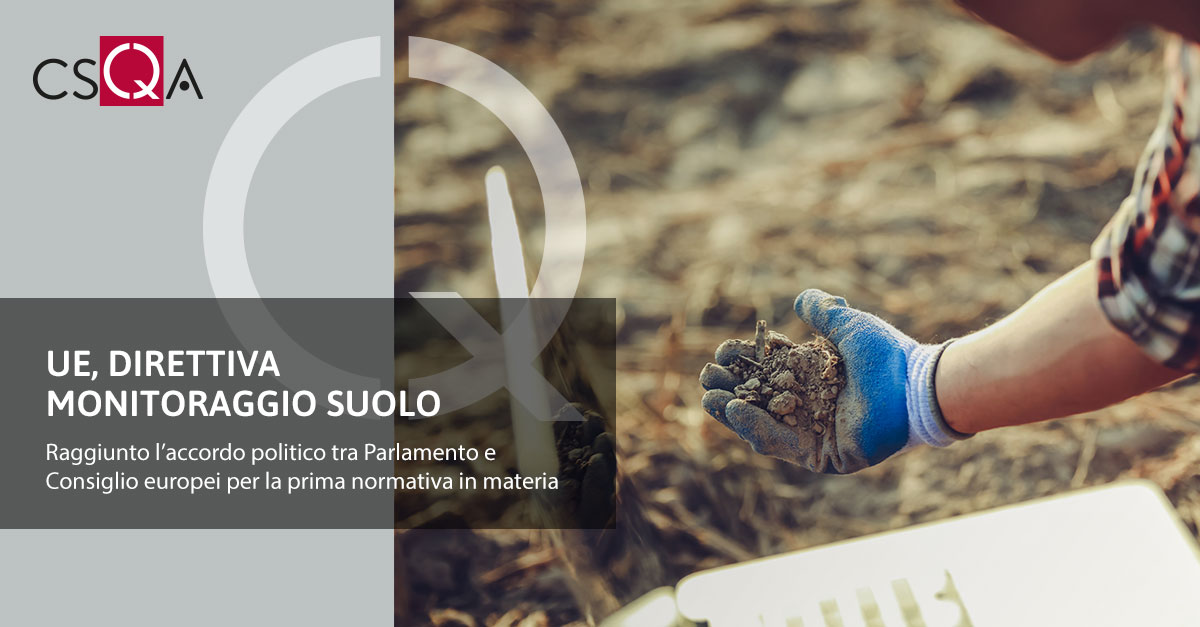 The European Parliament and Council have reached a political agreement on the first regulation on monitoring and evaluating the health status of soils.
The European Parliament and Council have reached a political agreement on the first regulation on monitoring and evaluating the health status of soils.A common framework for soil assessment and monitoring across the European Union.
With the (non-binding) objective of fully restoring the quality of European soils by 2050.
Currently, between 60% and 70% of European soils are in suboptimal conditions , at an estimated cost to the EU of at least €50 billion per year .
Soil Monitoring Directive: A Common Assessment Framework Arrives
The new Soil Monitoring Directive establishes a coherent and harmonised Community framework for soil monitoring .To date, there is no similar instrument at European level. Until now, in fact, soil did not enjoy the same level of protection guaranteed to water, marine environment and air.
And the lack of dedicated legislation to monitor the health of European soils had been identified as one of the main causes of their alarming state in the 2021 EU Soil Strategy.
The directive introduces a comprehensive system for monitoring and evaluating European soils.
According to the agreement, Member States will have to monitor and assess soil health across their territory using common soil descriptors characterising the physical, chemical and biological aspects of soil health for each soil type.
A common EU methodology for sampling points will also be adopted, ensuring comparable data.
To simplify implementation and reduce costs, the Twenty-Seven may rely on existing national soil monitoring campaigns or other equivalent methodologies.
An important innovation introduced by the agreement is the concept of classes to describe soil health, which will be based on:
- non-binding sustainable target values at EU level to reflect long-term objectives;
- operational trigger values, set at Member State level for each soil descriptor, to prioritise and gradually implement provisions leading to a healthy soil status.
Protection for farmers and foresters: support without new obligations
There is then a chapter dedicated to the protection of farmers and foresters.Even in the wake of protests from the primary sector over the requirements of the Common Agricultural Policy (CAP), the agreement explicitly states that the directive will not impose new obligations on landowners or land managers .
On the contrary, the Soil Monitoring Directive obliges Member States to support these actors in improving soil health and resilience. This support may include:
- independent consultancy ,
- training and capacity building activities,
- promotion of research and innovation,
- measures to raise awareness of the benefits of soil resilience.
Evaluating whether soil restoration actions are economically sustainable for the sector.
Management of contaminated soils and monitoring of emerging substances
The EU law will require the 27 to draw up a public list of potentially contaminated sites – albeit only within 10 years of its entry into force – and to address any risks to human health and the environment.Within 18 months of the entry into force of the Directive, an indicative list of emerging substances that could pose a significant risk to soil health, human health or the environment , and for which data are needed, must be prepared.
This list will include PFAS (the so-called “forever chemicals”) and some pesticides : these are the first steps towards an organic monitoring, on an EU scale, of these substances.
Making soil data available will support innovation and technological and organisational solutions , particularly in agricultural practices .
It will help farmers and other landowners to implement the most appropriate treatment methods and will help them to increase soil fertility and yield , while minimizing water and nutrient consumption.
These data will improve understanding of drought, water retention and erosion trends, strengthening disaster prevention and management.
The Commission concludes: " Healthy soils and better data offer additional income opportunities to farmers and land managers, who can be rewarded for carbon sequestration in agricultural soils , receive payments for ecosystem services or increase the value of healthy soils and the food produced on them". (Source: https://www.rinnovabili.it/ )